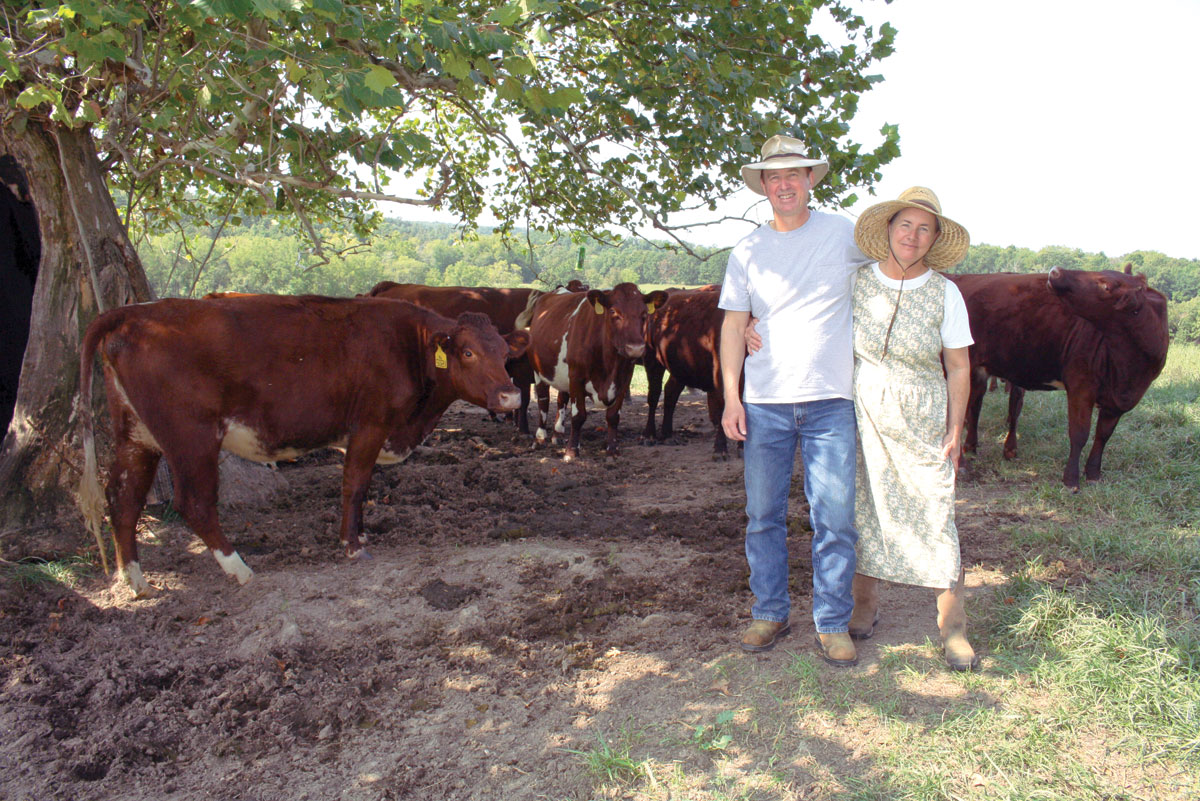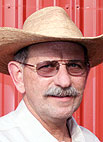
David and Diane Robertson have returned to their agriculture roots with a growing cattle operation
Having their own farm was always part of the plan for David and Diane Robertson, but it had to wait for David’s career in the U.S. Air Force to come to an end, and for their three children to finish college.
David grew up on a multi-generation dairy farm in Barton County, Mo., where they milked as many as 200 Holsteins and bottled their own milk.
“For the 1960s and 1970s, it was a pretty good sized dairy,” David said. “We grew our own grain and used our own milk in the processing plant.”
After the dairy operation ceased, his father, Darrell Robertson, went to work for the Holstein Association, and after high school David went to the University of Missouri-Columbia and joined the ROTC program, then the Air Force.
While stationed in California, David met horsewoman Diane, who also longed for a farming way of life in the future. Over the years, no matter where they were stationed, the couple engaged in agriculture, be it a small flock of sheep in Ohio or bees in Washington D.C.
“We wanted our kids to be involved in agriculture in some way,” Diane said. “Now when they come here they just dig right in and are willing to help out…If their financial situation would allow them, the boys probably would be here.”
Today, the couple owns 270 acres in rural Pulaski County, near Crocker, Mo., where they raise registered Shorthorn cattle.
“The idea was to always get back to farming,” David said. “We looked around, found this place and purchased in 2013 and moved here in 2015.”
The property had been abandoned for many years, and they have reclaimed about 170 acres of pastureland, repairing and replacing fences as they go. The house and outbuildings on the property were in such a poor condition they were not even valued.
“The best thing on the whole place was the working coral, but you couldn’t even see it because of the weeds,” David said.
“We were overrun with rodents and the coyotes were very, very thick,” Diane said. “It’s been a lot of work reclaiming it all.”
When the couple began researching breeds of cattle, they discovered Shorthorns.
“We liked the docility,” David said. “Then, as we started doing more research, we found that they do well in grass-fed situations.”
After continued research into the breed, the couple ventured into “native” Shorthorns.
Native Shorthorns, according to David, can be traced back to the original Shorthorn breed, before it split into beef or dairy breeds, and are considered a heritage breed.
“The pure native Shorthorn was just about gone,” he said. “They are still listed as a critical breed by the Livestock Conservatory.”
They currently have 33 head of Shorthorns, with 22 being native.
“Those will be our base,” Diane said.
David is quick to praise Diane for her tedious research into the native Shorthorn lines. Diane said it was a team effort.
The couple has purchased females and/or semen from other native Shorthorn breeders, including from Paul Wheeler in Appleton City, Mo., Haumont Shorthorns and the Cooksley family in Nebraska, and the J Bar J in the state of Nevada.
At this point, the Robertsons utilize an AI breeding program to gain more diversity with their herd, breeding for both spring and fall calves.
“We have four different bulls to choose from now,” David said. “We’re trying to take those bulls and develop the herd.”
They prefer to wait until heifers are at least 2-years-old before breeding. While that may seem a little late for some producers, David and Diane want to give their females a chance to grow and mature themselves before they start calving.
“Thirty, 40 years ago, I remember on the dairy that the general rule was not to breed until they are 2. Now, some will breed at that 13-month point. When we got back, we saw people breeding younger heifers, but we’re going to stick with that 2-year-old mark. Shorthorns have a longer growing period and get bigger at a later stage in life. I don’t think that heifer is ready until she’s 2 because you’re taking away from the growth potential of that heifer,” David said.
“Over the lifetime of that animal, waiting until they are 2 years old before you breed them means they will have one less calf,” Diane said. “Does it really pay off in the future? Is it really worth it? We’d rather have a stronger, healthy animal that can have a strong calf and raise it.”
With their diversified genetics, they are experimenting on the establishment of specific cow families. They now have six or seven maternal lines they are working with.
“We’ve picked animals from these other breeders’ cow families and now we are seeing which ones work best for us,” Diane said.
The couple joked that keeping their native lines straight can be a little difficult.
“Trust me, I feel the pressure,” Diane said with a laugh. “We don’t want to mess this up.”
Since going “native,” David and Diane said they have been amazed at the hardiness, calving ease and overall production of their native animals.
“They are really hardly any trouble at all,” David said.
Diane feels the modern Shorthorn breed is moving towards the appearance of a Red Angus, loosing the signature coloration of a true Shorthorn.
“Most of the modern Shorthorns are a just red,” David said. “Here, we have a mix and that’s what you will find when you are looking for native Shorthorns. You get an interesting combination and some style.”
This fall, they plan to breed 16 cows and heifers, and are in the process of evaluating which bull would be the best match for each individual female.
Although they initially started the farming operation by offering feed and grain to their cattle, the Robertsons have now converted to grass-fed. Grass-fed animals are tagged differently than those that have received grain. Those animals that once received grain are not be marketed or promoted as grass-fed animals.
“They really do pretty well on just grass,” David explained, adding that the only “feed” his Shorthorns now receive is alfalfa pellets, which gives the cattle a bit of a nutrient boost, and allows the couple to easily mingle with their cattle daily, as well as selected loose minerals.
Converting animals from grain fed to grass fed, especially those females that are nursing calves, is a bit of a transition for the animal and they do loose weight, but after they become adjusted to the diet, they quickly rebound.
“We’d really like to be able to find a source or outlet, or what you would call a craft butchery to work with and provide true grass-fed beef to.”
The couple also hopes to become seedstock producers for other breeders, with the ultimate goal of one day marketing herd sires and replacement heifers. They also hope to grow their herd to about 100 native Shorthorns.
“We want to be the ones who help to maintain that heritage breed,” David said, adding that some of the native breeders they have worked with are beginning to retire from the industry. “We’ll see how everything goes.”






